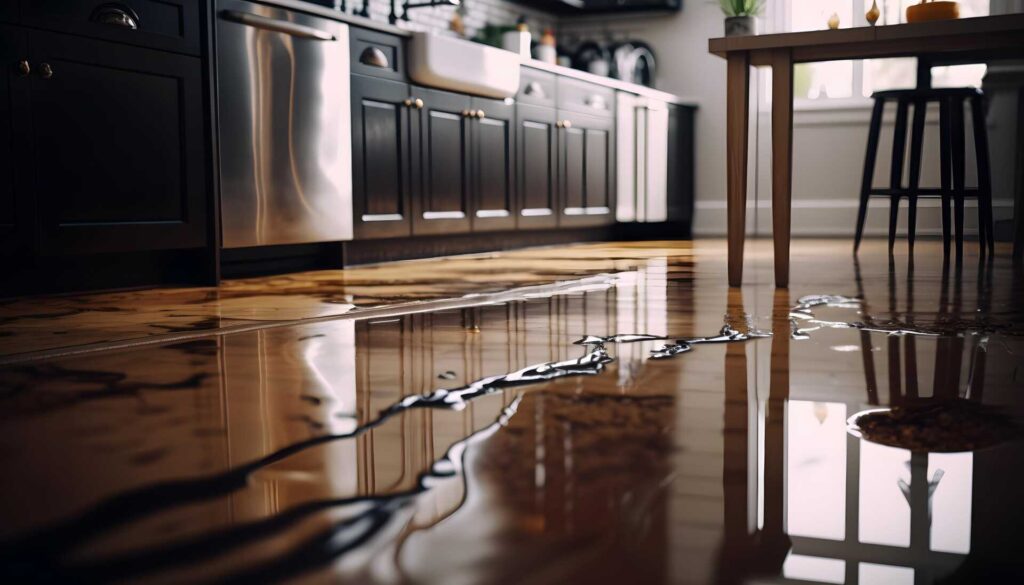
Contents
Emergency Water Removal is crucial when faced with water accumulation in your home. Knowing the right removal techniques is essential. You need effective strategies to quickly address the situation and prevent further damage. Pumps, dehumidifiers, and wet/dry vacuums each play a distinct role in this process. Understanding how to leverage these tools can make all the difference in managing moisture levels and ensuring your space remains safe and dry. Let’s explore these methods further.
Key Takeaways
- Utilize submersible or utility pumps for quick extraction of standing water in basements or crawl spaces.
- Install a sump pump for automatic water removal during heavy rainfall events.
- Employ dehumidifiers to control moisture levels and prevent mold growth after water damage.
- Use wet/dry vacuums for efficient extraction of water and residual moisture from affected areas.
- Regularly maintain and monitor all equipment to ensure optimal performance during emergencies.
Extracting Water With Pumps
When dealing with water damage, using pumps is one of the most effective methods to extract standing water quickly. Understanding different water pump types is essential for efficient removal. Submersible pumps are ideal for deep water, while utility pumps work well for smaller volumes.
Consider installing a sump pump if water accumulation is a frequent issue; it can automatically activate during heavy rainfall or flooding, protecting your home.
For sump pump installation, choose a suitable location in your basement or crawl space, ensuring it’s below the water table. Proper installation includes connecting a discharge pipe to direct water away from your foundation.
Regular maintenance is essential; check the pump’s operation periodically to avoid future emergencies. By following these guidelines, you can effectively safeguard your living space and minimize damage, giving you confidence in your ability to manage water-related issues.
Utilizing Dehumidifiers
Dehumidifiers play an essential role in managing moisture levels after water damage, helping to prevent mold growth and structural issues.
To maximize effectiveness, consider dehumidifier placement carefully. Position the units in areas with the highest humidity, typically near the source of water damage. Ascertain that the airflow isn’t obstructed, allowing for peak moisture control throughout the space.
Set the dehumidifier to the desired humidity level—ideally between 30% and 50%—to efficiently remove excess moisture. Regularly empty the water reservoir or connect it to a drainage system for continuous operation.
Keep windows and doors closed while the unit runs to enhance its efficiency.
Monitor progress by checking humidity levels with a hygrometer. This proactive approach speeds up the drying process and contributes to a healthier living environment.
Implementing Wet/Dry Vacuums
After addressing moisture with dehumidifiers, the next step in water removal involves using wet/dry vacuums. These powerful tools are vital for quickly extracting standing water from your home.
Start by selecting a vacuum with strong suction power—this ensures efficient water removal from carpets, floors, and other surfaces. Before you begin, check your vacuum’s filters and hoses to confirm they’re clean and free of clogs, as proper vacuum maintenance enhances performance.
As you operate the vacuum, move it slowly over the affected areas to maximize water extraction. Make sure to empty the vacuum’s tank frequently to maintain peak suction power.
After removing the majority of water, consider using the vacuum to pick up any residual moisture. This step is significant in preventing mold growth and further damage.
Review
In emergencies, effectively removing water from your home is vital to preventing damage. Think of pumps, dehumidifiers, and wet/dry vacuums as your trusty toolkit, ready to tackle the flood. By extracting water efficiently, managing humidity, and cleaning thoroughly, you can restore your space and protect your investment. Don’t wait until it’s too late—equip yourself with these essential techniques to keep your home dry and safe from the lurking threat of moisture and mold.
Recent Posts
Why Use Effective Emergency Water Removal Techniques?
When faced with water damage, you need to act quickly to mitigate the potential hazards.
